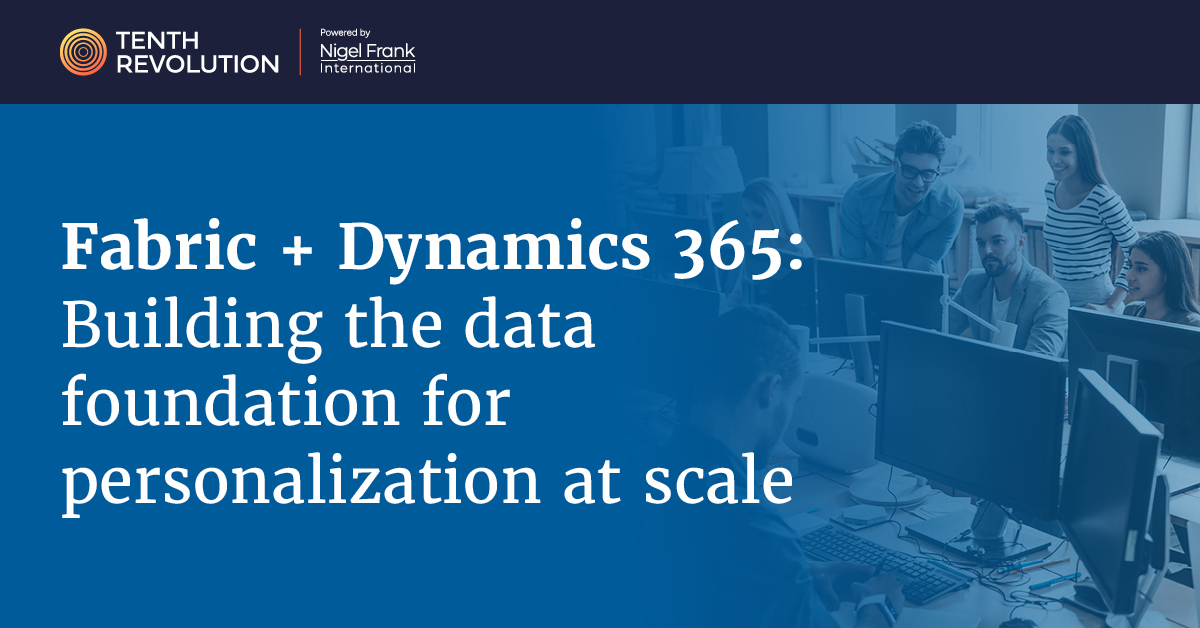
Imagine an executive walking into a board meeting and asking a simple question: “Which of our customers are most at risk of churn this quarter?”
In too many organizations, the answer would involve a scramble across spreadsheets, siloed CRM exports, and manually compiled reports. By the time the numbers arrived, the moment to act would already be gone.
With Microsoft Fabric and Dynamics 365 Customer Insights working together, that scenario changes. Data no longer sits in isolated systems. Instead, it is unified, activated in real time, and ready to feed personalized actions across sales, service, and marketing. For leaders, this isn’t just about analytics, it’s about building a decision-making backbone that can keep pace with customers.
How the backbone comes together
Microsoft has given executives a way to collapse the traditional gaps between data engineering, operations, and engagement. Fabric centralizes information in OneLake with a governed lakehouse. Dataverse continues as the operational record behind Dynamics and Power Platform. Customer Insights sits on top, resolving identities and activating segments directly into Dynamics applications.
The loop is tight: ingest, unify, analyze, act. A customer’s purchase history informs service interactions. A sentiment score from support feeds back into marketing campaigns. Inventory movements update personalization in commerce.
The technology is powerful, but it still requires the right people to make it run smoothly. Nigel Frank helps businesses hire Fabric engineers, Dataverse architects, and Customer Insights specialists who can design and manage these backbones to deliver real outcomes.
Signals executives should watch for
Many leaders only realize they need a data backbone when familiar frustrations start to mount:
- AI copilots give inconsistent answers because training data is fragmented
- Sales, service, and marketing teams use conflicting customer lists
- Analysts repeatedly rebuild extracts for each department
- Reports are delayed until month-end closes
If even two of these are happening in your estate, the case for unification is already clear.
Quick wins that prove the model
What sets Fabric and Customer Insights apart is how fast value can be shown:
- Dynamics transactions flow into Fabric the same day, enabling flash reports for finance and supply chain
- Customer profiles are resolved across email, device, and phone numbers, giving a consistent identity for every interaction
- Real-time telemetry signals can trigger audience updates, with Customer Insights sending instructions back into sales or field service
These are not long-horizon benefits. They are changes executives can measure in weeks.
And yet, success hinges on delivery talent. According to Nigel Frank’s Microsoft Cloud Careers and Hiring Guide, it now takes an average of 6.5 months to fill a Microsoft cloud role. That means early movers with the right hires in place will secure advantage while others remain stuck in backlog.
Governance that accelerates instead of slows
Executives often worry that governance will bog projects down. In practice, the opposite is true when done well. A single catalog of certified datasets, clear data contracts for every pipeline, and documented handling of personal information actually speed delivery. Teams spend less time debating “which version of the truth” to use and more time acting on reliable insights.
Building governance into the foundation also ensures copilots, dashboards, and personalization campaigns all draw from the same trusted source.
The leadership takeaway
Fabric plus Customer Insights isn’t just an IT investment. It’s a new operating model for how data supports strategy. The organizations that benefit most are those that see personalization and analytics not as separate projects but as two sides of the same backbone.




